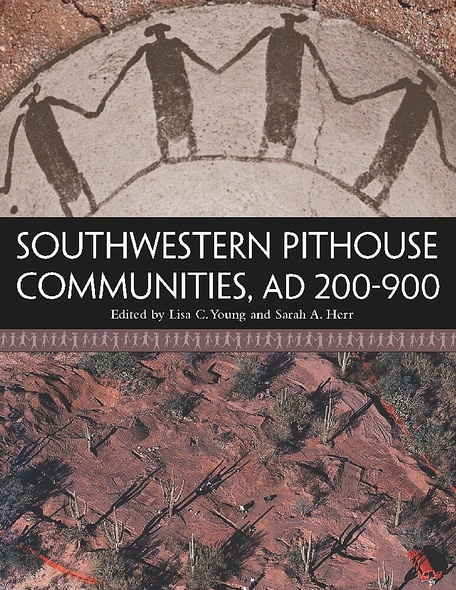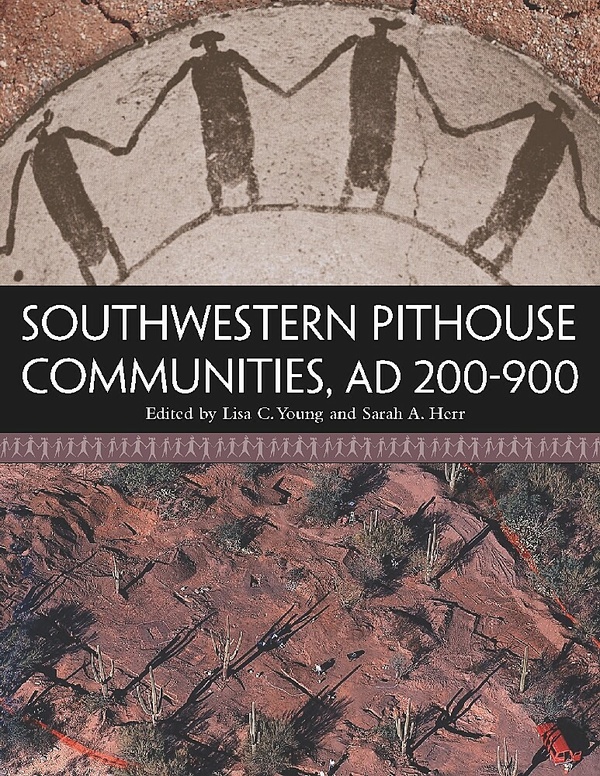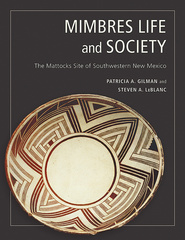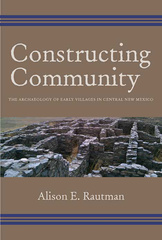Our shopping cart is currently down. To place an order, please contact our distributor, UTP Distribution, directly at utpbooks@utpress.utoronto.ca.

Southwestern Pithouse Communities, AD 200-900
Pithouses are the earliest identifiable domestic architecture in many areas of the world, and can provide insights into the origins of communities--a fundamental component of past and present societies. In this book, Lisa Young and Sarah Herr invite archaeologists to explore the development of communities using information from pithouse sites in the American Southwest.
Using regional and topical syntheses to investigate the formation of pithouse communities, contributors to this volume examine the complex relationship between the economic transition to agricultural dependence and the social changes associated with sedentism. They discover that during this transformation, peoples' relationship with the landscape changed in ways that affected their use of space, community organization, and cultural identity.
Employing various theoretical perspectives, these contributions analyze changes in pithouses, site layout, communal architecture, and settlement patterns to investigate the development of place-based communities. Chapters look at community formation strategies in populous regions like the northern San Juan Basin, the southern Colorado Plateau, Mimbres/southern Mogollon, and Hohokam Basin and Range and compare them with social structures in more sparsely populated regions like the northeast Hohokam peripheries, the Arizona Transition Zone, the Cibola region, southeast New Mexico, and the northern Rio Grande. The book also includes thematic discussions of panregional economic change, the complex relationship between house and household, and the demographic shifts accompanying the Neolithic Demographic Transition.
An essential book for students and archaeologists interested in the origins of communities, Southwestern Pithouse Communities is also an important comparative resource for scholars interested in social change during the transition to settled village life.
Lisa C. Young is a lecturer in the Department of Anthropology and a research scientist in the Museum of Anthropology at the University of Michigan. Sarah A. Herr is a Senior Project Director for Desert Archaeology, Inc. She is the author of Beyond Chaco: Great Kiva Communities on the Mogollon Rim Frontier, also published by the University of Arizona Press.
Preface
1. Introduction to Southwestern Pithouse Communities
Sarah A. Herr and Lisa C. Young
2. Subsistence during the Pithouse Periods
Michael W. Diehl
3. Hohokam Village Formation in the Phoenix and Tucson Basins
Henry D. Wallace and Michael W. Lindeman
4. Village Growth and Ritual Transformation in the Southern Southwest
Douglas B. Craig, Henry D. Wallace, and Michael W. Lindeman
5. Persistent and Permanent Pithouse Places in the Basin and Range Province of Southeastern Arizona
Jeffery J. Clark and Patricia A. Gilman
6. Identity Crisis: The Pithouse Period in the Arizona Transition Zone
Sarah A. Her
7. Southern Mogollon Pithouse Period Settlement Dynamics, Land Use, and Community Development, AD 200–1000
Steve Swanson, Roger Anyon, and Margaret C. Nelson
8. First-Millennium Pithouse Community Diversity in Southeastern New Mexico
Thomas R. Rocek and Alison E. Rautman
9. Interaction, Accommodation, and Continuity among Early Communities in the Northern Rio Grande Valley, AD 200–900
Steven A. Lakatos and Stephen S. Post
10. Small Hamlets to Early Great Houses: The Emergence of Villages in the Mesa Verde Region between AD 200 and 900
Richard H. Wilshusen, Winston Hurst, and Jason Chuipka
11. Before Chaco: Pithouse Communities on the Southern Colorado Plateau (AD 200–850)
Lisa C. Young and Dennis Gilpin
12. Rethinking Pithouse Communities across the Greater Zuni Region
Matthew A. Peeples, Gregson Schachner, and Edgar K. Huber
13. Pithouses, Property Rights, and Household Organization in the Prehispanic Southwest
W. H. Wills
14. Pithouse Communities and Population
Sarah H. Schlanger and Douglas B. Craig
Introduction to the Appendixes







